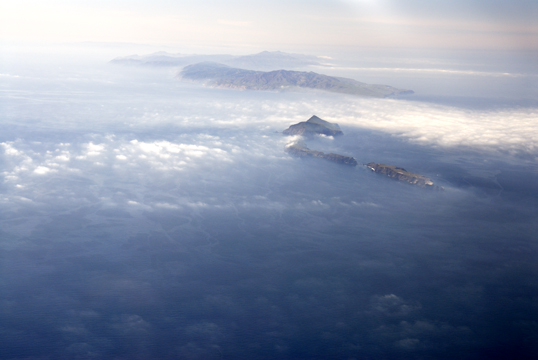Featured News
Overview
The Channel Islands National Marine Sanctuary is located off the coast of Santa Barbara and Ventura counties in Southern California, 350 miles south of San Francisco and 95 miles north of Los Angeles. The sanctuary was designated in 1980 because of its national significance as an area of exceptional natural beauty and resources. The sanctuary encompasses 1,470 square statute miles (1,110 square nautical miles) of water from mean high tide to 6 nautical miles offshore of Anacapa, San Miguel, Santa Barbara, Santa Cruz, and Santa Rosa Islands. The sanctuary is characterized by a unique combination of features including: complex oceanography, varied bathymetry, diverse habitats, remarkable biodiversity, rich maritime heritage, a remote yet accessible location, and relative lack of development.
The sanctuary is an important place for an array of different species including 34 species of marine mammal, 195 species of seabirds, 4 species of sea turtles, 481 species of fish, over 5000 species of invertebrates, 492 species of algae and 4 species of seagrass. In addition the sanctuary includes sensitive habitats, shipwrecks, and maritime archaeological artifacts. The combined physical, biological and cultural characteristics of the sanctuary provide outstanding opportunities for scientific research, education, recreation, and commerce. Such activities include commercial and recreational fisheries, marine wildlife viewing, sailing, boating, kayaking, diving and other recreational activities, maritime shipping, and nearby offshore oil and gas industry.
A comprehensive ecosystem management approach is used to promote long-term conservation of sanctuary waters, wildlife, habitats, and maritime archaeological resources, while allowing compatible human uses. In 2003 the state of California established 11 no-fishing marine reserves and two limited-fishing marine conservation areas extending from the mean high water mark to the state water boundary at 3 nautical miles. In 2007, NOAA completed the Channel Islands marine protected area (MPA) network, and added one new reserve in addition to extending some of the state’s protected areas out to the federal boundary at 6 nautical miles.



